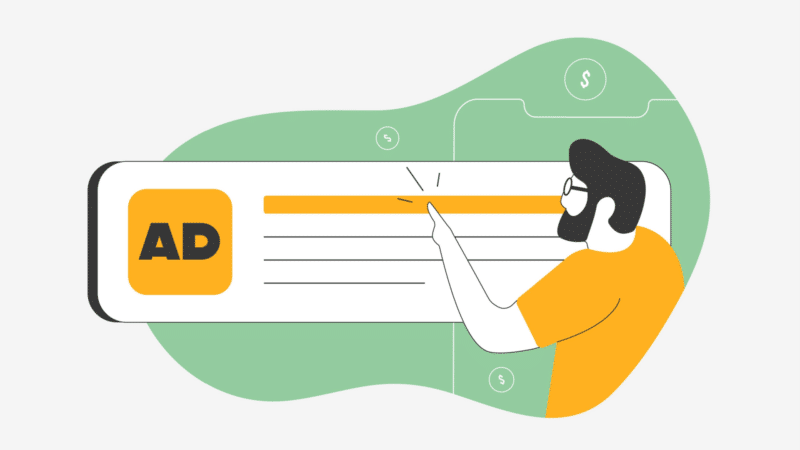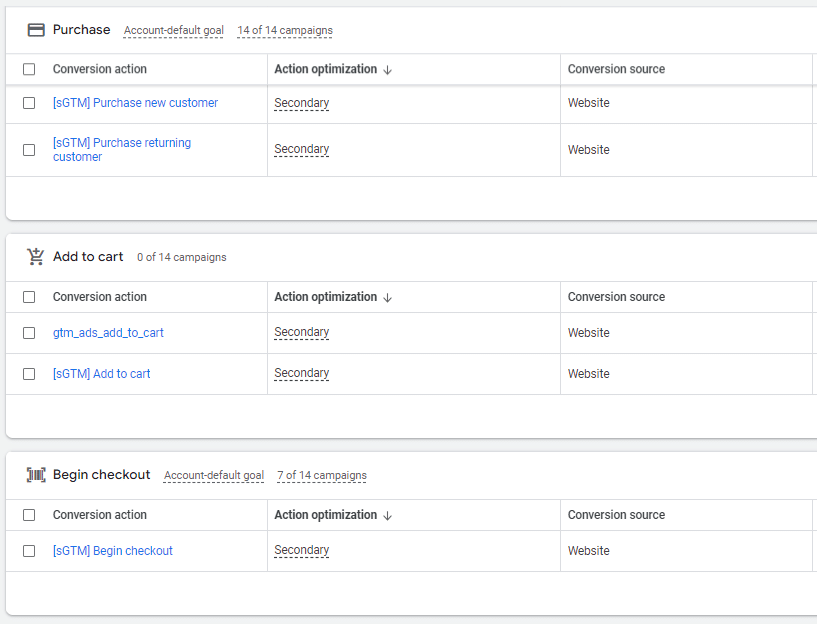How to develop a paid search strategy

A successful Google Ads PPC strategy involves more than just picking a few keywords. It requires a structured plan that aligns with your business goals, optimizes your budget and uses data to boost performance.
Whether your audience is solution-aware or problem-aware, understanding the nuances of each stage in the sales funnel and selecting the right Google Ads campaign types is essential.
In this article, “solution-aware” refers to people who know a solution exists, while “problem-aware” describes those encountering innovative solutions that are new to the market.
Let’s dive in and get those ads working smarter, not harder.
Define your end goal: RevenueEvery successful PPC strategy starts with clearly understanding your end goal: revenue.
Not all revenue is the same. The path to earning it varies between ecommerce and lead generation, so your strategy should reflect those differences.
For ecommerce businesses, the objective is to generate sales directly through purchase checkouts.
This means your PPC campaigns should focus on attracting high-intent buyers ready to whip out their credit cards.
Think of high-conversion keywords and dynamic product ads that directly showcase your offerings and promotions in the search results.
You want to make the sale as efficiently as possible.
Lead generation businesses focus on gathering potential customers’ information – through forms, calls or other interactions – so you can later turn these leads into sales.
Here, success isn’t just about the volume of leads but their quality.
Your PPC campaigns should engage potential customers with compelling offers, informative content or demonstrations encouraging them to share their contact details. It’s about starting a conversation that successfully leads to a sale.
Google Ads strategies can maximize ecommerce and lead generation outcomes by tailoring campaigns to align with the specific stages of the sales funnel.
Dig deeper: Lead gen vs. ecommerce: How to tailor your PPC strategies for success
Evaluate first-party dataBefore you launch any campaigns, look hard at the first-party data available. This is your goldmine for creating a targeted and effective strategy.
Zero data- If you’re starting from scratch, your focus should be on branded and high-intent campaigns to gather initial performance insights.
- This will help refine audience targeting and identify high-performing segments.
- Think about micro-conversion actions such as button clicks or add-to-carts to propel you faster.
- Use past conversion data to optimize campaigns, honing in on keywords, audiences and ad strategies that have historically delivered.
- Google’s bidding algorithms have a strong relationship with your conversion data. You want to preserve it to the best of your ability.
- If you have them, use customer match lists to create targeted remarketing campaigns and expand your reach through high-quality audience signals.
- These lists are like a secret weapon – the higher the list quality the better your results will be.
First-party data is the backbone of your strategy, enabling you to make informed decisions and refine your approach over time. The more you know, the better your campaigns will perform.
 Map out the sales funnel and develop strategies
Map out the sales funnel and develop strategies
Understanding the sales funnel is crucial to creating a PPC strategy that guides your audience from awareness to conversion.
Whether your audience is solution-aware or problem-aware, your approach should vary, using different campaign types and targeting methods to achieve optimal results.
Bottom of funnel (BOFU): Converting prospects to customersThe bottom of the funnel is where the magic happens. Your focus here is on converting high-intent prospects into customers.
This stage is crucial for increasing Return on Ad Spend (ROAS) and ensuring efficiency, so you should maximize your budget here first.
- Branded search campaigns: Capture users searching specifically for your brand. It’s all about staying top-of-mind and ensuring you’re there when they’re ready to take action.
- Non-branded search campaigns: Target high-intent, non-branded keywords that signal a readiness to purchase. Highlight your unique selling propositions (USPs) and competitive advantages to address the needs people are searching for.
- Performance Max campaigns: These are your full-funnel champions, leveraging Google’s machine learning to optimize ad delivery and reach the right audience at the right time.
- Remarketing campaigns: Reengage users who have interacted with your website but haven’t converted yet. Use messaging that emphasizes urgency – like limited-time offers or discounts – to nudge these users toward a purchase.
Focus on high-intent keywords and use clear, action-oriented messaging highlighting product benefits and competitive pricing.
Differentiate your product from competitors with comparisons, testimonials and guarantees. Show them why you’re the best choice, no contest.
Middle of funnel (MOFU): Nurturing prospectsOnce you’ve nailed it at the bottom of the funnel, it’s time to move to the middle.
In the middle of the funnel, you nurture interested prospects who aren’t quite ready to commit. This is your opportunity to engage users in the research phase.
- Non-branded search and dynamic search ads campaigns: Target broader keywords related to your product or service. These users are still browsing but are starting to get serious. Test different keywords and measure what works based on your average click costs and conversion rates.
- Video campaigns: Use informative or educational videos to build trust and give more insight into your product. Storytelling helps create a connection and build credibility. Target custom segments and in-market audiences specific to your product or service.
- Remarketing campaigns: Keep the conversation with users who have shown initial interest but need further nurturing before converting. Address their objections and provide additional information to guide them toward a decision.
For solution-aware audiences, provide content that emphasizes the effectiveness of your product or service, like case studies or detailed demonstrations.
For problem-aware audiences, focus on educating them about the problem and how your product can provide a solution. You’re not just selling a product; you’re solving a problem.
Top of funnel (TOFU): Building awarenessThe top of the funnel is all about casting a wide net. Your goal here is to build brand awareness and attract a healthy, engaged audience.
- Video campaigns (YouTube ads): Use video content to introduce your brand and its products to potential customers. Create engaging, informative content that captures interest and establishes your brand’s identity. Think of this as your brand’s first handshake.
- Demand Gen campaigns: Target broader audience segments and lookalikes to engage users who haven’t visited your website before. Use soft calls to action, like “Learn More,” to encourage exploration.
For solution-aware audiences, use educational and entertaining content to pique curiosity and demonstrate the unique value proposition.
For problem-aware audiences, provide valuable insights or resources to help them understand their problem and consider your product a potential solution. You’re planting seeds that, with the right nurturing, will grow into loyal customers.
Dig deeper: How to implement a full-funnel PPC marketing strategy
Allocate budget strategically for maximum ROASIf you have a limited budget, start at the bottom of the funnel and work your way up.
By focusing on high-intent, lower-funnel campaigns first, you maximize ROAS and ensure that your ad spend drives immediate and measurable results.
Once you’ve solidified that foundation, you can move up the funnel, allocating the remaining budget to nurture leads in the middle and build awareness at the top.
This approach ensures that you efficiently spend your budget on the highest-return activities first while still investing in future growth.
Why starting with the top of the funnel is a smart approachWhen you have the budget to support it, starting with top-of-funnel (TOFU) strategies can be one of the smartest moves you make in your PPC campaigns. Here’s why:
Build brand awareness and trust early
Focusing on TOFU activities allows you to introduce your brand to potential customers who may not yet know they need your product or service.
By engaging them with educational content, videos and awareness campaigns, you establish trust and build a strong foundation for future conversions.
Trust and recognition are cultivated through consistent, valuable interactions, making your brand the go-to choice when they’re ready to buy.
Capture attention and influence decisions
Engaging customers early in their journey means you’re shaping their perception before they even consider your competitors.
The sooner you can capture their attention, the more you can influence their decision-making process, guiding them down the funnel towards conversion.
Prime your audience for conversion
A top-of-funnel strategy doesn’t just generate awareness – it primes your audience for conversion.
By nurturing these prospects with valuable content and building a relationship from the start, you’re setting the stage for higher conversion rates as they move through the funnel.
When they’re ready to make a purchase, they already know and trust your brand.
Starting at the top of the funnel isn’t just about casting a wide net; it’s about building a strong, loyal customer base that drives long-term success.
If your budget allows, don’t hesitate to invest in TOFU strategies. This forward-thinking approach pays dividends down the road.
Dig deeper: How to manage a paid media budget: Allocation, risk and scaling
Crafting a comprehensive PPC strategy for long-term successBy creating a comprehensive PPC strategy that encompasses every stage of the sales funnel, from awareness to conversion, you set your business up for immediate wins and sustainable growth.
With a thoughtful approach that considers both short-term and long-term goals, your Google Ads campaigns can drive meaningful results and build a loyal customer base.
Focus on building a strategy that is data-driven, customer-centric and adaptable to the changing landscape of digital advertising.
This way, you’ll achieve your revenue goals and cultivate a robust and loyal customer base that will sustain your business for years to come.
Gear up, plan smart and let your Google Ads campaigns work hard for you. Every click has the potential to build something great.
